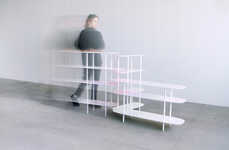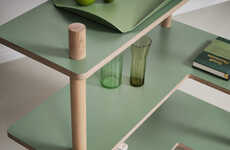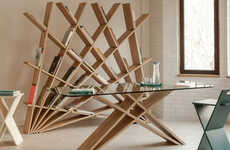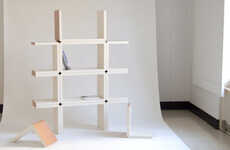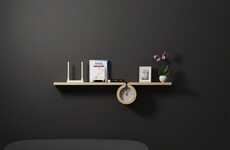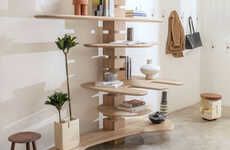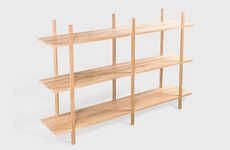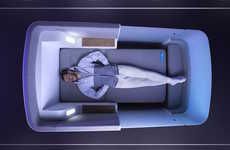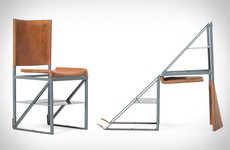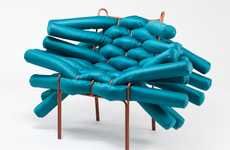
Olafur Eliasson's Green Light Series has a Triangular Pattern
Joey Haar — April 10, 2017 — Art & Design
References: olafureliasson.net & dezeen
Icelandic industrial designer Olafur Eliasson has created a new set of shelving as part of his Green Light series. The shelving, which joins a table in the Green Light series, features a similar geometrical pattern to that table, but this pattern is reimagined in three dimensions to impressive effect.
Eliasson's shelving surfaces alternate between rectangular and trapezoidal shapes in order to conform to the angular construction of the frames. These frames consist of a series of triangles, but the triangles are all placed at slightly different canted angles. As one walks around the shelving, the frames thus seem to transform and shift their patterns — an illusion caused by the eye's inability to process the subtle changes in depth.
The Green Light series was unveiled at Milan design week.
Eliasson's shelving surfaces alternate between rectangular and trapezoidal shapes in order to conform to the angular construction of the frames. These frames consist of a series of triangles, but the triangles are all placed at slightly different canted angles. As one walks around the shelving, the frames thus seem to transform and shift their patterns — an illusion caused by the eye's inability to process the subtle changes in depth.
The Green Light series was unveiled at Milan design week.
Trend Themes
1. Geometric Design - The use of geometrical shapes to create dynamic patterns can inspire new design possibilities in architecture, furniture design and graphic design.
2. Optical Illusions - Incorporating the principles of optical illusions in design can create fascinating and engaging products and experiences, with applications in psychology, art and marketing.
3. Transformational Design - The use of design elements that transform and shift patterns can stimulate new innovations in product design, fashion and interior design.
Industry Implications
1. Furniture Manufacturing - Manufacturers of shelving, tables and other furniture can incorporate geometrical, light-reflecting designs that create visual depth and movement.
2. Architecture - Incorporating optical illusions that play with depth and perception can add an interesting dimension to building design, particularly in lobbies or other public spaces.
3. Art - Artists can incorporate geometrical and optical principles in their work to create thought-provoking and visually stimulating pieces, especially in installation and sculpture.
4.6
Score
Popularity
Activity
Freshness

